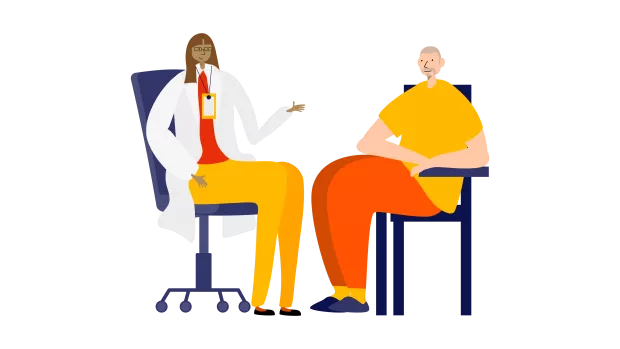
Ozanimod (Zeposia)
Ozanimod is a disease modifying therapy for 'active' relapsing MS. Its brand name is Zeposia and you take it as a pill.
Read the latest information about DMTs and coronavirus COVID-19
- Who can take ozanimod (Zeposia)?
- How does ozanimod (Zeposia) work?
- How well does ozanimod (Zeposia) work?
- What are the side effects of ozanimod (Zeposia)?
- Ozanimod (Zeposia) and pregnancy, breastfeeding and contraception
Who can take ozanimod (Zeposia)?
In Scotland you can have ozanimod (Zeposia) if:
- you have ‘active’ relapsing MS. That means you’ve had a recent relapse and/or MRI scans show that you have new lesions. On top of that, a drug that comes as a tablet should be suitable for you, or that’s the type of drug you’ve asked for
In May 2021 it was decided that this drug wouldn’t be available on the NHS in England and Wales. It’s expected that Northern Ireland will also follow this decision.
How does ozanimod (Zeposia) work?
Special types of cells in your immune system, called T and B cells, are thought to cause a lot of the damage in MS. They normally kill viruses and bacteria that get into your body but in MS they damage your nerves. Ozanimod stops them leaving your lymph nodes where they're made. This means fewer of them get into your brain and spinal cord where they would attack the covering (myelin) around your nerves.
Ozanimod is a tablet you take once a day.
How well does ozanimod (Zeposia) work?
Two trials have compared ozanimod (Zeposia) to beta interferon, a drug already used to treat MS. Ozanimod was significantly better than beta interferon at reducing how many relapses people got and how many lesions were seen on their MRI scans.
Relapses dropped by: 38% compared to beta interferon
This means that in a trial over two years, on average, people saw a 38% drop in the number of relapses they had. This was compared to people who took a beta interferon.
When it comes to disability getting worse, it’s not yet clear how much ozanimod can slow this down.
What are the side effects of ozanimod (Zeposia)?
The most common ozanimod (Zeposia) side effects include colds, headaches, as well as chest and urinary tract infections. Compared to other DMTs the risk of side effects, especially serious ones, is somewhere in the middle and similar to those you get with fingolimod. That said, in trials ozanimod had fewer side effects than fingolimod.
When you take your first dose of the drug, it can cause your heart beat to slow down (it soon goes back to normal). Because of this, your first dose will be smaller, then it’s gradually increased over the first week.
Ozanimod causes a short-lived rise in your liver enzymes. They generally go back to normal levels without you needing to stop taking it.
Ozanimod (Zeposia) and pregnancy, breastfeeding and contraception
Pregnancy
We don’t have research on whether ozanimod (Zeposia) can harm unborn babies. But we know it can cause this kind of damage in animals. If you can get pregnant, you need a negative pregnancy test result before starting this treatment. You must avoid getting pregnant while taking ozanimod.
If you and your partner want to have a child, discuss this with your neurologist. If you think you’ve become pregnant, let your medical team know at once. Never stop your DMT without first getting their advice.
Breastfeeding
Studies in animals show ozanimod (Zeposia) can get into breast milk. So you shouldn’t breastfeed while on this drug.
Contraception
If you can get pregnant, you must use reliable contraception (the ‘pill’, condom, an implant or IUD) while you’re on ozanimod (Zeposia) and for three months after the final dose if you stop.


